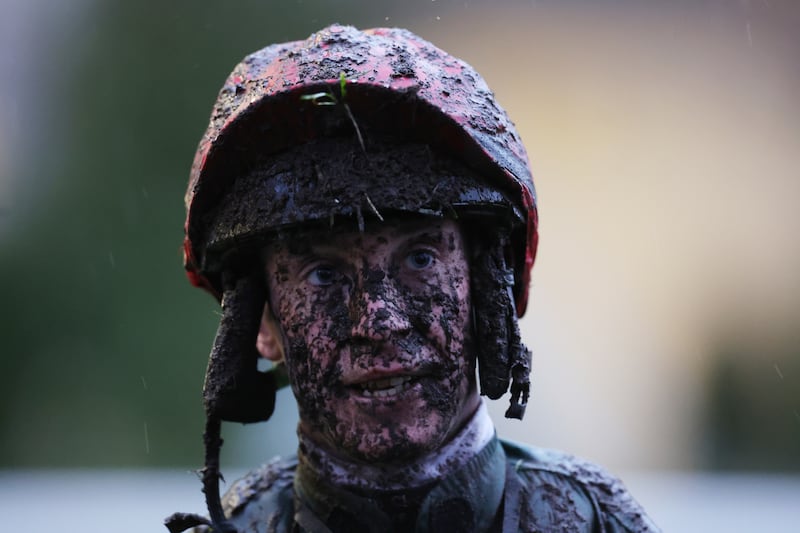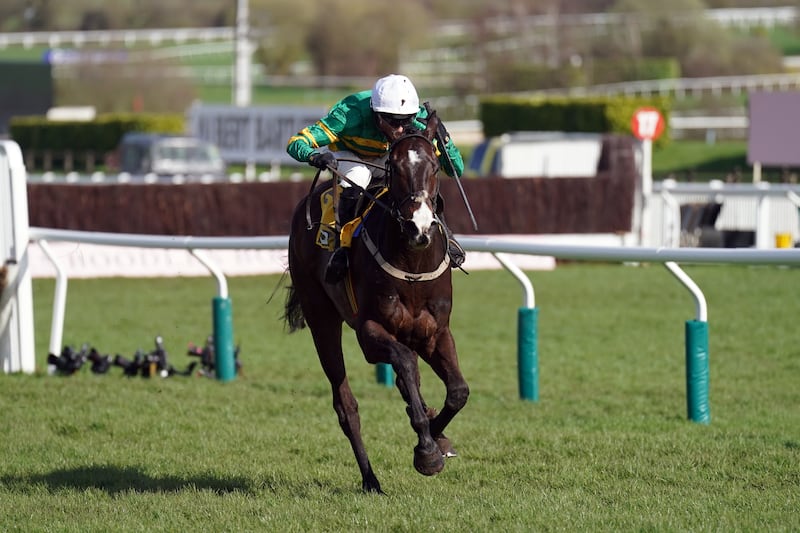Readers may find some of the contents of this article disturbing
Patrick Maher made his grim discovery just over 20 years ago. The nine-year-old was playing with three friends near his house in Roscrea, Co Tipperary. “It was early in the day. The field was right behind the house I used to live in; 2 Cois Carrig. I had a hurl in my hand. I saw a doll about four feet from the fence, and I was about to hit it with my hurl.” Just before his hurl hit, he jerked it back.
“It wasn’t a doll. It was a real baby,” he recounts, still sounding horrified at how close he came to striking a dead newborn infant.
The baby boy was unclothed and lying on his back. Maher bent down and felt the body. “It still had colour. It wasn’t warm, but the body still felt soft, kind of squishy. It seemed to us like someone had thrown it into the field over the fence. There is no way it could have been there long. It was right out in the open. Someone would have seen it.”
OVER RECENT DECADES dead babies found on open ground in Ireland have been the rightful cause of public discourse. On January 31st, 1984, 15-year-old Ann Lovett gave birth alone to a stillborn boy at a grotto in Granard, Co Longford. She died in hospital that same day. Their deaths convulsed Ireland.
That same year, on April 14th, a newborn baby boy was found dead; abandoned on White Strand beach at Cahersiveen in Co Kerry.
To this day it has never been established why he was left there or who his parents were. That baby was to become known as one of the two “Kerry Babies”. The other was a second dead baby boy who had been born to Joanne Hayes of Abbeydorney, and had been secretly buried on her family farm.
More than 30 dead babies have been discovered on public ground in Ireland in recent decades, in fields, on beaches, beside rivers and at the sides of roads
But these are not the only dead babies discovered on public ground in Ireland in recent decades. They are just three of more than 30. These babies were found, variously, in fields, and bogs, on beaches and beside rivers, in public toilets, churchyards, waste facilities, and at the sides of roads, and alongside railway tracks.
The most recent case was less than four years ago, at a waste facility in Co Wicklow. In most cases their deaths merited only short news reports in the media. The stories behind the circumstances of so many dead babies being abandoned all over Ireland remain largely untold.
Collectively they represent consistently terrible stories of unimaginable fear. For whatever reasons, the girls or women who gave birth to these babies felt unable to seek a medically-supervised delivery, or to publicly acknowledge the existence of their babies. Some came forward later, but many did not.
We can only imagine what it felt like, and we can only speculate as to the stories that lie behind each individual case. What we can be sure of, however, is that these cases represent only a fraction of a practice that was tragically widespread.
These dead babies are a reminder of the longevity of desperate solutions to the problems faced by lonely, scared women. The men who impregnated them are seemingly invisible
Diarmaid Ferriter, professor of modern history at University College Dublin, explains the social background to such cases – historical and recent.
“After 1949 infanticide was no longer a capital offence in Ireland, but despite legal change the stigma around pregnancy outside marriage – as a result of church, State, familial and societal disapproval – endured.
“These dead babies do not belong to a dark, distant era of Irish history; they are instead a reminder of the longevity of desperate solutions to the problems faced by lonely, scared women. The men who impregnated them are seemingly invisible.”
Dr Catherine Conlon is an assistant professor of social policy at Trinity College Dublin who has researched concealed pregnancy in Ireland between 1995 and 2005. “In cases where a body is found, reports over those 10 years indicate a policy of no criminal charges being brought,” she notes. “In most cases where mothers were identified, no arrest was made.”
PATRICK MAHER STILL lives close to Roscrea, and is now 29. He recalls what happened after he and his friends discovered the baby.
The boys did not move the body. They ran together to the house of another friend, and blurted out their news to his father, who immediately called the Garda.
Maher’s parents, Margaret and Pat, were down town that morning doing some last-minute Christmas shopping. When they arrived home around noon they saw a Garda car. “The guards came into the house and said Patrick and his friends were after finding a dead baby, and we were in absolute disbelief,” says Margaret Maher.
The local doctor, George McManus, was called to the scene. The doctor confirmed that the baby was dead. Fr Colm Hogan, then a priest based in Roscrea, was also phoned. “I was out doing my Christmas calls to the elderly in the parish when I got a phone call from the guards telling me that a baby had been found dead in a field and would I call to the scene and maybe say some prayers,” he recalls. “It was really upsetting to hear that; it stopped me in my tracks.”
By the time Fr Hogan arrived the baby’s body had been covered with a pillowcase. “I could see the face and head, and the rest of the body was covered.” A number of people had gathered at the scene, waiting for prayers to be said. “I said the Our Father and a couple of Hail Marys and then left.”
Soon after photographs were taken of the scene, and clay samples collected.
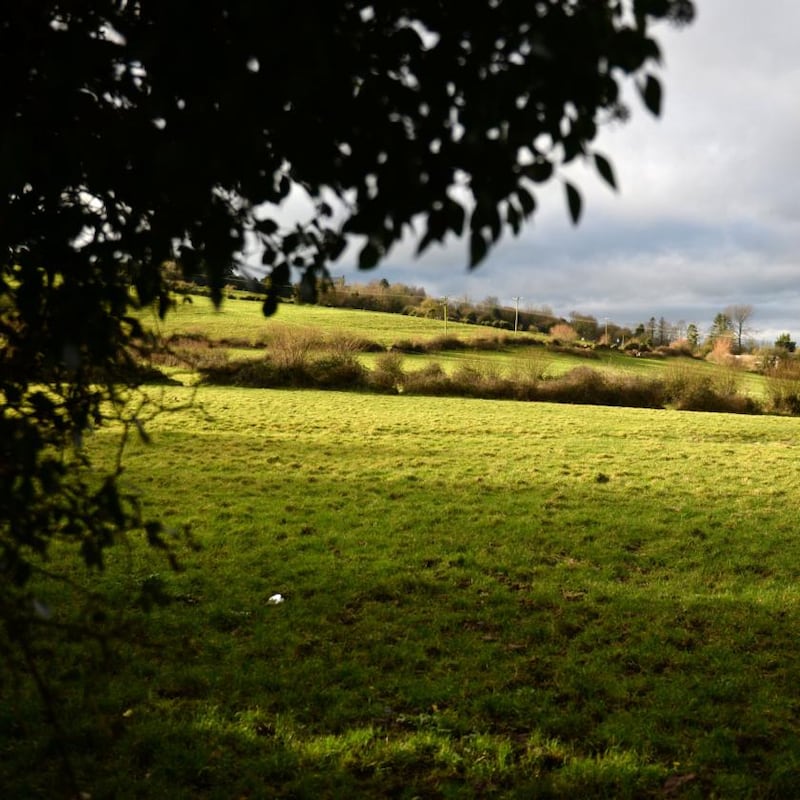
Patrick Maher believes he has a vivid recollection of the baby’s body eventually being removed from the scene and put in an evidence bag in the boot of a Garda car to be brought to the local morgue. “I remember them closing down the boot of the car and driving away.”
Dr Marie Cassidy, then assistant State pathologist, arrived to the morgue at 8.30pm that evening to carry out the postmortem. “All the reporters were around the estate looking for the boys,” Patrick’s mother recalls. “But we didn’t allow him to talk to anyone.”
Their son stayed indoors for a few days, unusually subdued.
As it happened, Margaret Maher had spent the Saturday night, December 22nd, in a room at the back of their house, sleeping in with a sick sibling of Patrick’s. “It looks out over the field. I slept in the back room that night.”
I asked one of the guards if the baby had been alive when it was put in the field. He said no, that the baby was dead before it went into the field
Maher was haunted by the thought that she had been asleep while a helpless baby possibly lay dying not far from her back garden. “There were guards going round all the houses in the estate, and I asked one of them if the baby had been alive when it was put in the field. He said no, that the baby was dead before it went into the field.”
The local priests were consulted, and it was decided to give the baby the name John as he been found on the feast day of St John Kanty.
The local community at the trio of connected housing estates where he had been found got together and collected money for a funeral and a headstone. The funeral was organised by the Mid Western Health Board.
The baby was buried on January 6th, 2000, at St Cronan’s Cemetery in Roscrea, after a funeral Mass at noon in the nearby church. The grave was covered with flowers and stuffed toys. Some 100 local people were in attendance for the jointly concelebrated Mass by Fr Sean Horgan and Fr Colm Hogan.
“There were so many flowers and the funeral was so well attended for a little baby nobody knew,” Fr Hogan says. “I wondered at the time, and I wonder now, if perhaps the mother and father of the baby were among the crowd.”
A representative from the Mid Western Health Board was present for the occasion. PJ Cleary, director of nursing at Nenagh General Hospital, told reporters that the funeral was “a sad experience for all concerned”.
Marie Cassidy told the inquest that the child was newborn and full-term. She noted the umbilical cord had been cut with something sharp, possibly a knife. There was no obvious cause for the baby to have died, nor any evidence of violence
The four boys who found the baby went back to school after their Christmas holidays and after the funeral. “No, there was no counselling, nothing. Nobody said anything about it,” Patrick Maher says now.
Baby John’s inquest was held in October 2001, and the New Ross Standard reported on the inquest.
Marie Cassidy told the inquest that the child was newborn and full-term. She noted the umbilical cord had been cut with something sharp, possibly a knife. There was no obvious cause for the baby to have died, nor any evidence of violence.
The paper reported: “Death could have been from inattention at birth; ie, lack of warmth and clothing, lack of food, and bleeding from the umbilical stump if the child was alive at birth.”
The jury found that the cause of death was unascertainable but that the likely cause was “inattention at birth”.
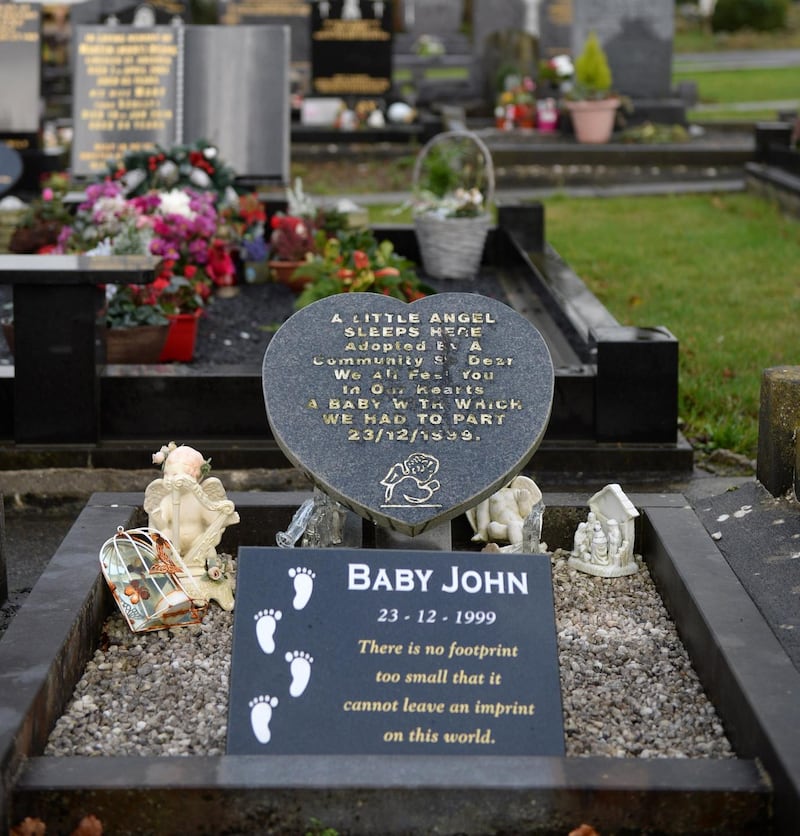
Baby John’s grave is located up at the steep part of St Cronan’s cemetery; what local people call “the new graveyard”. A local woman in the cemetery leads me to the grave.
There are some stone and glass angels on the small grave, and two memorial stones. One is heart-shaped, and reads: “A little angel sleeps here. Adopted by a community so dear. We all feel you in our hearts. A baby with which we had to part. 23/12/1999.”
The second has four little white footprints carved into it, and reads: “Baby John, 23-12-1999. There is no footprint too small that it cannot leave an imprint on this world.”
The woman who has led me to the grave stands alongside for a while, scrutinising it.
“There are usually flowers there in the summer, but it’s winter time now. The people of the town kind of adopted the grave,” she explains, before saying goodbye.
At the inquest, held almost two years after the body was found, Supt Jim Mulligan stated that the Garda still had no idea of the identities of either the mother or the father of the baby, “despite intensive investigations then, and discreet inquiries since”.
Nobody, it appears, saw anything. Or noticed anything. Or knew anything
As part of its verdict of death the jury returned the opinion that the newborn boy died in or around December 23rd, at Cois Carrig housing estate: ie, that he died in the estate prior to being placed in the field to be found.
Yet nobody interviewed on the estate appeared to have noticed a hypothetical girl or woman living there, who was in full-term pregnancy, and whose baby had then mysteriously vanished. Nor did anyone notice a strange man or woman enter the closely-knit housing estate carrying a bundle or bag, accessing an entrance in the fence that only local people knew, depositing a baby in the field beyond, and walking away again. Nobody, it appears, saw anything. Or noticed anything. Or knew anything.
Is Fr Hogan surprised that nobody has ever come forward with information about the dead baby?
“It’s one of those questions that you can’t answer,” he says. “It’s one of those untold stories.”
What follow are more of these “untold stories”, from a list of cases that is not comprehensive. They do not include the considerable number of newborn babies abandoned alive.
Five decades of tragedies
December 1971, Co Kildare
An employee of CIÉ, as the State railway was called at the time, found a two-day -old baby girl dead near Kildare station. Denis O'Brien found the baby lying between the railway tracks and the embankment. The baby had been strangled, and a pair of women's tights were still tied tightly around its neck. The body was taken to the County Hospital in Naas, where then assistant State pathologist Frank Martin carried out the postmortem. The baby had further injuries to her body, to the head and arms, consistent with having been thrown from a moving train.
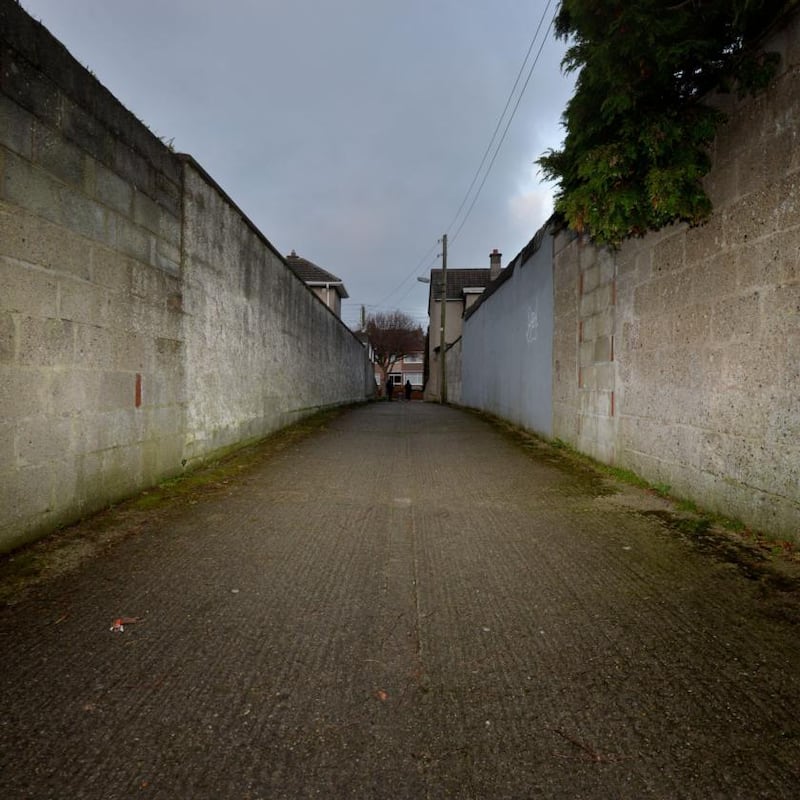
January 1981, Dublin
Pedestrian Peter Bennett was walking down a lane linking Willow Park Avenue to Glasnevin Avenue at 9am, when he came across a string bag. Inside was the body of a dead baby boy with a plastic bag over its head. The placenta was still attached to it, and a long umbilical cord. John Harbison, State pathologist at the time, found the baby to have been normally developed, and of a gestation of 36 weeks. He told an inquest that the cause of death was haemorrhage associated with a fractured skull. He suggested this could have been "the result of a difficult and unattended labour, or due to a precipitate delivery on to a hard floor".
July 1983 Headford, Co Galway
Two boys searching for scrap metal found a dead baby boy in a plastic black sack of rubbish at Galway City Dump. The baby was among items of household refuse. Gardaí were unable to determine whether the plastic sack had been collected in the usual manner from a household by Galway Corporation or deposited at the dump by a person unknown. The postmortem results showed that the 38-week-old baby had been stillborn.
June 1984, Boyle, Co Roscommon
A shopper found a dead baby girl in the women's public toilets. The newborn baby was wrapped in a shirt and covered with a plastic bag. It was found on the floor of a cubicle.
February 1985, Galway city
A group of young boys walking along the military path from Galway railway station to the army barracks in Renmore shortly after 5pm found a dead newborn baby girl. The baby was in a plastic bag, and had been left on the path in the open. Also in the bag was a pair of bloodstained women's underpants and two wads of bloodstained tissue paper. Charles Connolly, a consultant pathologist, told the subsequent inquest that he believed the baby had "been born in a public or semi-public place, such as a toilet". Connolly told the inquest that "the baby's umbilical cord had been pulled away from the placenta after the baby was born, while the placenta was still in the mother's womb."
1985, Oldcastle, Co Meath
Liam Farrelly, a 17-year-old fisherman, found the body of a dead baby wrapped in a blue pillowcase. It was 8pm, and he had come to Oldtown Lake to go fishing. The baby had been left close to the lakeshore at Bellaney.
December 1985, Dundalk, Co Louth
A dead baby girl was found inside a plastic rubbish bin in the women's public toilets at Dundalk Shopping Centre. Gardaí established that traces of blood had been seen in the same public toilet one week earlier. They believed that the baby had either been born in the toilet, or at a location very close to it, one week previously. They believed the body had been removed from the shopping centre, and then returned to the toilet on the day it was found. Tests by then State pathologist John Harbison showed that the child had lived for only a short period after birth due to lung inflation.
April 1991, Enniscorthy, Co Wexford
Josephine O'Reilly from Enniscorthy was out walking with her mother-in-law, Mary O'Reilly, at about 6pm on the main Enniscorthy to Clonroche Road when they found the body of a dead baby boy. There had been no attempt to hide the body, which was discovered in a ditch-like gully running alongside the road.
July 1992, Dublin
A 22-year-old girl gave birth in her bedroom alone in Dublin while her mother, sister and brother were downstairs in the house. She had denied she was pregnant. The dead body of the baby boy was subsequently later found in a tea-chest in her bedroom. It was face-down under a blood-stained sheet. The umbilical cord was around its neck and still attached to the placenta. The baby was full-term. John Harbison, then the State pathologist, told the subsequent inquest that the baby had died of a subdural haemorrhage, "consistent with a difficult and unattended labour". The jury returned an open verdict on the death. The mother was not in court for the inquest.
December 1993, Dublin
While cutting grass in the Phoenix Park, an employee of the Dublin parks servicesfound a rucksack that had been hidden in a briar hedge near the Ashtown Visitor Centre. When he opened the rucksack he discovered the decomposed body of a baby boy wrapped in newspaper and plastic. Also in the rucksack was a piece of paper with a list of questions all to do with sexual practice. Four of them were as follows: "Respond to this statement – the only acceptable form of birth control for unmarried teens is abstinence. Does it matter to you whether the person you marry is a virgin? Do you think the fear of pregnancy affects the conduct of your peers? Does it affect you?" A postmortem later found that the newborn baby had been in the hedge for between six and 12 weeks. The cause of death was unascertainable due to decomposition.
January 1994, Listowel, Co Kerry
Local farmer Daniel Lane was out tending his cattle about 2km from Listowel town. He came across the body of a dead baby girl,lying on the banks of the river Feale. The river had been in flood the previous day. Gardaí believed that the baby had been put into the river upstream and travelled downriver until it was washed up. The location were the baby had been found was not accessible by the general public. The two-day-old baby had been born alive. Much of the umbilical cord was still attached. A week later the mother, described by gardaí as a teenage girl, came forward.
February 1994, Maynooth, Co Kildare
A man out walking his dog along the Royal Canal near Maynooth saw the dog suddenly go into the water near Straffan Bridge. The dog fetched what the man thought was a doll, but which was in the fact the badly decomposed body of a baby girl. A postmortem revealed that the baby had been in the water for between three and nine weeks. She was stillborn.
March 1995, Athy, Co Kildare
A newborn baby girl was found dead in a house in a village four miles from Athy. A young woman was taken to Portlaoise Hospital soon after the discovery.
May 1995, Waterville, Co Kerry
A local officer of the Department of Marine's Coast and Cliff Rescue Service Edward Falvey and his teenage son were walking the beach near Waterville around sunset. They discovered the body of a dead baby boy, beneath cliffs at a stretch of rocky coastline at Murreagh. The baby was full-term. Gardaí believed it had been washed in on the tide, and had not been in the water longer than two days. The burial was deferred for two months to give the mother time to come forward. She did not. The baby was given the name Finian, after a local saint, and buried in Waterville cemetery in August.
May 1997, Portarlington, Co Laois
A local man found the body of a newborn baby in a Church of Ireland graveyard in Rathmiles, Portarlington, hidden under trees beside a wall. The body was in a black plastic bag, full of what gardaí described as "kitchen rubbish". They believed there "had been an effort to conceal the body in the rubbish". A 16-year-old girl later came forward to the Garda.
October 1997, Lisburn, Co Armagh
A man walking his dog on the Ballygowan Road in Lisburn found a black plastic bag at the side of the road. Inside was a newborn dead baby girl.
August 1997, Cork
A 36-week-old dead baby was found in a sports bag in a shed in the garden of a suburban house in Cork. The baby was found by the house-holder. The mother came forward. Gardaí described her as "young". She was placed under medical care. It was described as "a tragic case of private heartbreak".
June 1999, Carndonagh, Co Donegal
A local man noticed that earth had recently been disturbed in bogland some three miles from Carndonagh. On investigation he discovered the body of a prematurely-born baby boy in a makeshift grave. The baby was wrapped in towels. Three weeks later the parents came forward. The mother was described by Supt Tom Murphy as being in her "early teens" and the father in his "early 20s".
August 2000, Glenbeigh, Co Kerry
Two English tourists walking near a secluded cove at Rossbeigh beach near Glenbeigh found the body of a newborn dead baby half-buried in sand and seaweed. The baby boy was partly clothed. The mother came forward two days after the discovery.
July 2001, Limerick
Two 10-year-old boys, Ian Storan and Brendan Nugent, playing on the Green in Garryowen found the body of a newborn baby girl in a black plastic bag. They had been playing hurling, and using the bag as a goal post. The bag had been left out on the green, visible to all for some days: it was assumed to be a bag of rubbish. While the boys were playing a dog worried the plastic bag open. When the boys went over to look they found a jumper inside and the dead baby. The baby was full term. It was believed to have been in the bag for at least a week. Cause of death was inconclusive due to decomposition. The baby was known as the Garryowen Baby. Burial was deferred until October to allow the mother to come forward. No one did.
January 2002, Dublin
When the mother of a 15-year-old girl found a pool of blood on her bedroom floor, the daughter told her it was the result of a heavy period. When her parents took her to St Columcille's Hospital in Loughlinstown, to get checked out, she was referred on to Holles Street. At Holles Street it emerged that the girl had had a miscarriage, possibly at 20 weeks. The parents attempted to discover what had happened the baby's body but could not. One week later the body of a full-term baby was found wrapped in a blanket in the girl's wardrobe. A subsequent inquest revealed that the baby was alive when born. State pathologist Marie Cassidy told the court that the combination of a difficult delivery and lack of medical attention after the birth had led to the baby's death. In evidence the father of the young girl said on the night the body was discovered in the bedroom wardrobe, he asked his daughter why she had not told them she was pregnant. He said that his daughter told him she was afraid to tell him. The jury returned a verdict of death by misadventure.
March 2002, Belfast
The body of a dead baby girl was found by a group of children close to Loughmore Leisure Centre outside Belfast at Carryduff. It was in a black bin bag in a laneway. The baby had been murdered. The body had extensive stab wounds and head injuries. The baby had been dead for some weeks. She was named Carrie by PSNI officers after Carryduff.
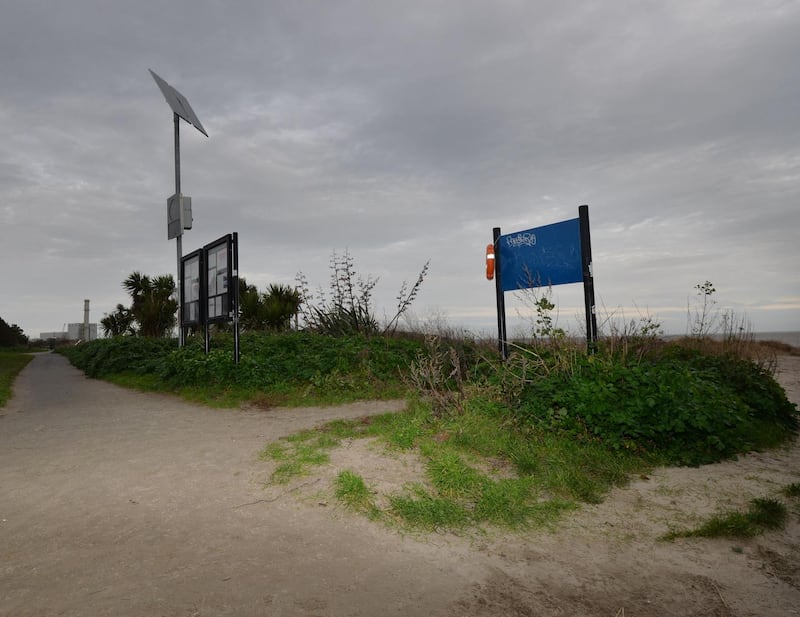
July 2002, Dublin
A passer-by found a black holdall bag in Seán Moore Park in Ringsend near Sandymount beach. Inside was the body of a baby girl wrapped in a towel and a blanket. The bag had been left close to rocks at the high tide mark on the beach. The baby, who had black hair, was estimated to be a week old. The umbilical cord was still attached. She was named Jude and buried in the children's plot in Glasnevin Cemetery the following March.
January 2003, Ballyclare, Co Antrim
Around midnight a farmer witnessed a car driving away on a country road near Ballyclare, Co Antrim, close to this farm, leaving behind a burning bag. He went over to see what was burning, and to put the fire out. In an attempt to quench the fire he stamped on the bag. "I felt a hard object in the bag and kicked it out of the way of the fire into a field," he told The Irish Times later. "I didn't know what it was at the time. I thought it was a dead animal, and as a farmer I see that kind of thing quite a bit." Alarmed by the burning bag having been left near his property, he called the police. "The police shone a torch into the field, then told me what it was I kicked out of the bag – it was a baby."
February 2003, Dublin
A routine delivery of building rubble arrived to a landfill site at Swords from Newtown Industrial Estate in Coolock. Construction workers at the site discovered the body of a baby boy wrapped in a blanket among the rubble. A subsequent postmortem showed that the baby was full term, and had been alive at birth. Death was due to lack of nutrition.
September 2004, Dunmanway, Co Cork
An increasingly bad smell in their house led the parents of a young woman to seek the source of the smell. They discovered the decomposed body of a newborn baby boy wrapped in clothing in a cupboard off the bathroom of their house. Gardaí believed that the remains had been in the house for between two and three weeks. The parents of the young woman told gardaí they were unaware of the pregnancy. A week before the body was discovered their daughter had been admitted to a psychiatric hospital.
February 2005, Belmullet, Co Mayo
A group of young boys found a black plastic bag sticking out of an area of bogland at Carrowtigue, Co Mayo. There had been attempts to bury the bag. When they opened it, they discovered the body of a newborn baby boy. The subsequent postmortem revealed the baby was full-term, had been born alive, and had died soon after, possibly due to the fact the birth was unassisted. An item of women's clothing found at the scene later led gardaí to a woman who revealed to them she was the mother.
August 2005, Broadford, Co Limerick
A skip that had been out for hire in Rathkeale was delivered to White's Skip Hire Yard near Broadford to be emptied. A worker who had started segregating the contents for recycling saw the body of a baby boy suddenly falling out of a bag. The baby had been full term, and born alive, but had not lived long after. It was estimated it had been dead for about two days. The baby was buried after one month. He was given the name Aidan, as he was buried on the feast day of St Aidan.
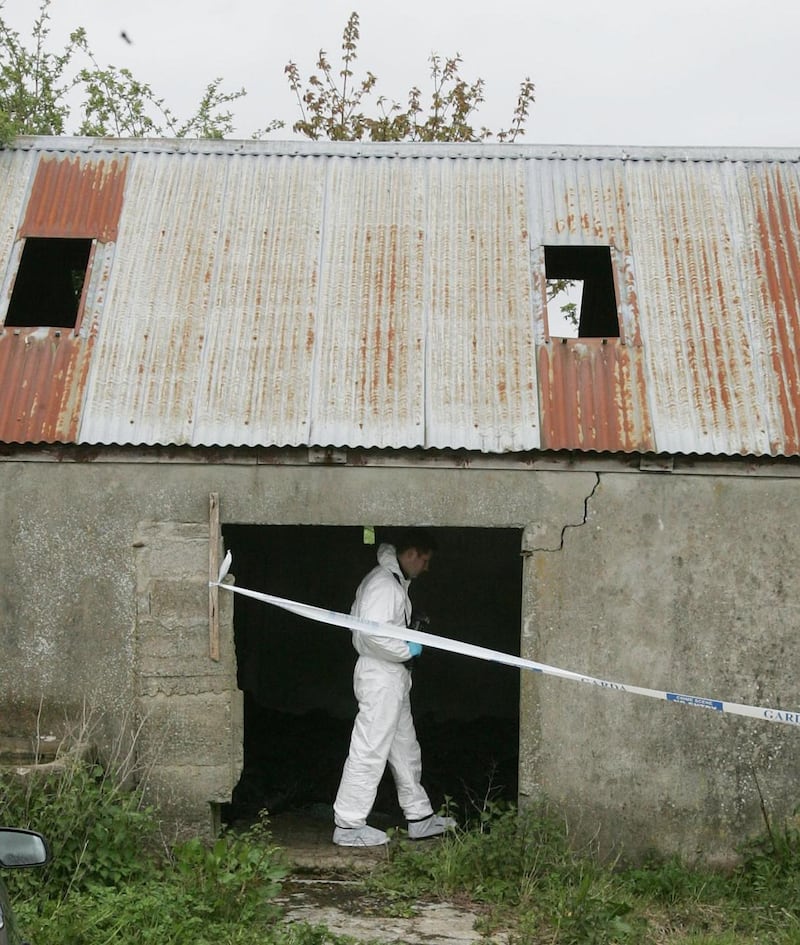
May 2006, Kildalkey, Co Meath
Workmen sheltering from the rain in a disused shed in Kildalkey discovered the decomposed body of a baby. It had been wrapped in blankets. Gardaí subsequently traced the mother.
July 2006, Rathkeale, Co Limerick
A landlord checking on a property after the departure of tenants noticed a strong smell. He subsequently discovered the decomposed body of a baby girl concealed in the attic of the house. The body had been in the attic for some months. It emerged that the 20-year-old mother, the former tenant, had given birth alone in the house. She had two other children. Gardaí told reporters she was receiving support from the HSE.
Baby Alannah, 2016
The most recent case of a dead baby being abandoned in a public space in Ireland, whose mother and father remains unknown, was less than four years ago.
At about 11am on May 4th, 2016, an employee of the Greenstar recycling company was separating material at its Fassaroe location close to Bray, Co Wicklow. As he worked he discovered the naked body of a small baby girl in among the waste.
Within the hour gardaí and a local doctor were on the scene, and both the Garda Technical Bureau and the State Pathologist’s Office had been informed. Work at the site ceased, and employees were sent home for the day. Counselling was subsequently offered to staff.
The Fassaroe centre accepts waste from all over the country, and it was unclear at which location in the country the baby had been unwittingly collected from. Greenstar has a network of collection points all over the southeast, and Fassaroe also accepted industrial and commercial waste from all over the country.
The distressed mother could have been travelling anywhere around the country. We don't know what exactly happened leading up to the birth of the baby. However, it is possible that the baby was stillborn
A postmortem carried out the following day at Loughlinstown Hospital by then State pathologist Marie Cassidy revealed that the baby had been born some weeks earlier. This changed the timeline of when the body may have been deposited with the waste: ie, it could have occurred weeks previously rather than days. There were no signs of deliberate injury to the body.
Supt Pat Ward of Bray later told the media: “We wish to stress that we are making inquiries on the basis that the baby could be from anywhere in the country. We are not narrowing down our field of investigation to any particular area.
“The distressed mother could have been travelling anywhere around the country. We don’t know what exactly happened leading up to the birth of the baby. However, it is possible that the baby was stillborn.”
It was not possible to establish whether the baby had been left in a household bin or a commercial one.
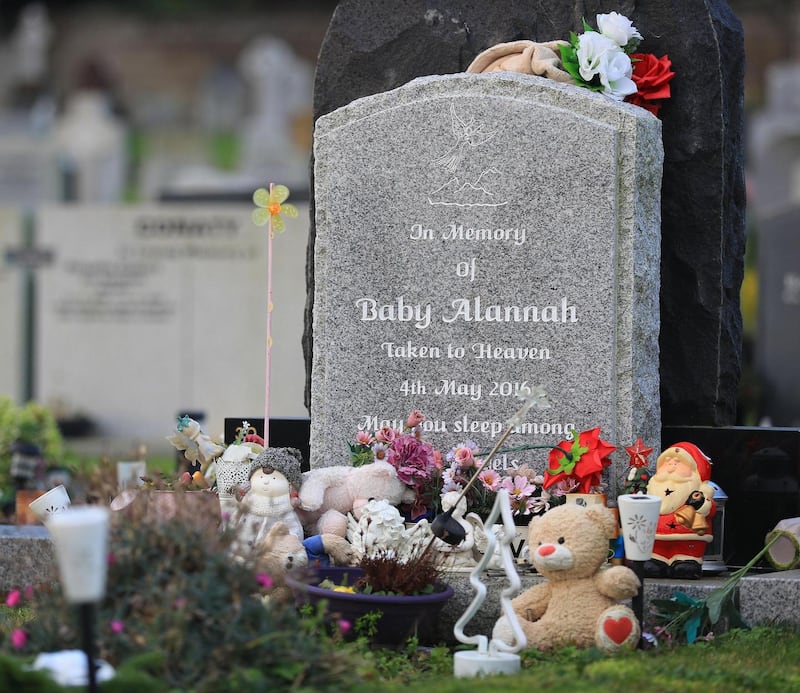
The baby was given the name of Alannah. She was buried at Redford Cemetery, Greystones, on May 13th, 2016, with some 120 people in attendance; many of them from Greenstar and the Garda Síochána.
Her headstone, which was paid for by Greenstar, reads: “In Memory of Baby Alannah, taken to Heaven 4 May 2016. May you sleep among the angels and dream amongst the stars.”
Despite subsequent appeals by the Garda on the anniversary of her discovery, no further information has been made publicly available.
‘Growing sympathy’ for mothers
ANALYSIS: Dr Catherine Conlon is an assistant professor of social policy at Trinity College Dublin who has researched concealed pregnancy in Ireland. Her study of newspaper reports of newborn infants abandoned in Ireland between 1995 and 2005 reveals some patterns.
“In that time 10 babies’ bodies and four live newborn babies were found abandoned within the Republic of Ireland. “The majority of newborn babies’ bodies were discovered in rural areas, whereas the majority of live newborn babies were found in cities.”
Responses to the discovery of newborn babies, alive and dead, changed over that time, she says. “There was growing sympathy and understanding towards women and the circumstances in which they carried pregnancies, gave birth and then abandoned babies.”
The indeterminate nature of pregnancy, particularly in conditions of extreme stress, can mean labour arrives before the woman is prepared. An unanticipated and unassisted labour and birth can easily end in unintended harm and even potential death for the child
Why are babies abandoned and pregnancies concealed? Dr Conlon lists three common types of concealed pregnancy.
One is “unconscious denial”, where a woman has no awareness of being pregnant for most of the pregnancy, even up to an unexpected and sudden delivery. This can also feature as an “undetected pregnancy”, she says, where both the the woman and doctors fail to detect a pregnancy.
“Conscious denial” is a second type, where the pregnancy is recognised by the woman but she actively denies it to herself and others. “This is a coping mechanism women invoke because the reality of pregnancy is unimaginable to them. It may “generate intense anxiety and present a very real threat to how they had anticipated the trajectory of their lives”.
Finally, “concealment of pregnancy” is when a woman acknowledges the pregnancy to herself but hides it from others. She may not present for medical care until almost the point of delivery or in some cases not at all. “Concealing pregnancy is a coping strategy that allows women manage their own sense that the pregnancy is a personal crisis.”
Dr Conlon adds: “The indeterminate nature of pregnancy, particularly in conditions of extreme stress, can mean labour arrives before the woman is prepared. An unanticipated and unassisted labour and birth can easily end in unintended harm and even potential death for the child.”
She says the social and cultural history of Ireland is replete with harsh treatment of women who became pregnant in what were deemed the wrong social circumstances.
“Women have plenty of instances to draw on as evidence of the consequences of ‘falling pregnant’, with the accusation of ‘how could you be so stupid’ the most likely charge.
Women are expected to have control over their fertility even though they still walk a reputational tightrope if they are too assertive in preparing for sexual encounters
“Women are expected to have control over their fertility while at the same time consent is acknowledged as highly fraught in heterosexual relations and women still walk a reputational tightrope if they are too assertive in preparing for sexual encounters.
Conlon advises: “Recent efforts to build enhanced sexual competency in young people by overhauling the sex education curriculum, to enhance access to effective contraception and provide abortion services are welcome in ensuring these stories of dead babes become confined to history.
She concludes: “The compassion we have for absent mothers who labour and birth in circumstances that lead to the death of their child and shock and horror at the loss of the child should be extended, so that all women can access care to control their sexuality and fertility until ready to become pregnant, and that any pregnancy they would disclose and child they would birth will be welcomed and valued in society without judgment or risk of poverty and exclusion.”















